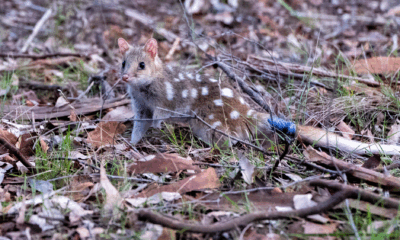Gadgets
Polar bears adapted to the Arctic just 70,000 years ago

The Arctic is a harsh environment for many animals, but some, like polar bears, have genetic adaptations that help them thrive. Recent genomic analysis suggests that polar bears may have evolved key genes separating them from brown bears around 70,000 years ago, aiding their survival in extreme conditions. These findings were published in a study in the journal BMC Genomics on September 15.
Polar bears have unique adaptations for Arctic life, such as dual-layered fur for insulation and camouflage, and a specialized metabolism that allows them to digest high levels of cholesterol from blubber. Scientists believe that polar bears diverged from brown bears within the last one million years, with ongoing debate about the specifics of their Arctic adaptation.
In a recent study, researchers analyzed the genomes of modern polar bears, brown bears, and two fossilized polar bears, including the Poolepynten jawbone from Svalbard and a skull named Bruno found in Alaska’s Beaufort Sea. By comparing these genomes, the team identified key genes that underwent selection around 70,000 years ago, indicating a gradual adaptation to the Arctic environment.
The study identified seven key genes for Arctic adaptations, with four showing fixed alleles in polar bear genomes, indicating ancient selection. The other three genes, related to cardiovascular functions and metabolism, showed fixed alleles in modern polar bear genomes, suggesting recent adaptations for survival, possibly towards the end of the last ice age.
Further research is needed to explore if other Arctic animals share similar genetic adaptations affecting fur color, heart health, and metabolism. Understanding these genetic changes can provide insights into how animals like polar bears have evolved to thrive in extreme environments.
-

 Destination8 months ago
Destination8 months agoSingapore Airlines CEO set to join board of Air India, BA News, BA
-

 Breaking News10 months ago
Breaking News10 months agoCroatia to reintroduce compulsory military draft as regional tensions soar
-

 Gadgets3 months ago
Gadgets3 months agoSupernatural Season 16 Revival News, Cast, Plot and Release Date
-

 Tech News12 months ago
Tech News12 months agoBangladeshi police agents accused of selling citizens’ personal information on Telegram
-

 Productivity11 months ago
Productivity11 months agoHow Your Contact Center Can Become A Customer Engagement Center
-

 Gadgets3 weeks ago
Gadgets3 weeks agoFallout Season 2 Potential Release Date, Cast, Plot and News
-

 Breaking News10 months ago
Breaking News10 months agoBangladesh crisis: Refaat Ahmed sworn in as Bangladesh’s new chief justice
-

 Toys12 months ago
Toys12 months ago15 of the Best Trike & Tricycles Mums Recommend























